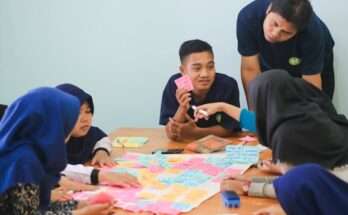Museum UX Designer, The term UX Designer may seem like it’s specific to the tech industry, but it’s actually used to describe professionals who work with any type of user interface. In the world of museums, UX Designers are the people responsible for creating engaging, intuitive digital experiences that can be accessed by all visitors, from school-aged children to senior citizens with slower reflexes. The more museum visitors learn about the exhibits, where to find them, and how to make the most of their time inside the museum, the more likely they are to come back and learn more about other exhibits as well.
What Does a Museum UX Designer Do?
- How to design for an audience
- How to plan your time at a cultural institution
- A Day in the Life of a Museum UX Designer
- The Skills Required for This Career

How to design for an audience
In order to design for an audience, you must first understand who your audience is and what they want. Once you know this, you can begin to design the user experience. The goal of a museum UX designer is to create an enjoyable and memorable experience for visitors. This can be done through various means, such as providing clear wayfinding, making sure exhibits are accessible, and creating engaging content. By keeping the visitor in mind at all times, you can create a successful museum experience. The most important thing is to make it easy for people to find their way around.
Signs should point them in the right direction so that they don’t have to wander aimlessly throughout the museum and potentially miss out on something else. Make signage descriptive by including not only directional instructions but also interesting facts about each exhibit or room they’re walking into so that people don’t get bored during their visit. Exhibits should also be made available on all levels so that handicapped or elderly visitors aren’t left behind. With these two factors considered, a person with any ability level will feel welcome and comfortable during their visit to your museum’s galleries!
How to plan your time at a cultural institution
A museum UX designer is responsible for creating and improving the user experience of visitors to a museum or other cultural institution. They work to make the experience more enjoyable and efficient and often collaborate with other departments within the institution. In order to design an effective user experience, museum UX designers must first understand the needs of their users. They then create prototypes and test them with users to get feedback. The iterative process of design and testing continues until the final product is ready for launch.
Once you’ve entered, take some time to get oriented. Most museums have floor plans available and some will even have them displayed in prominent locations. Use these maps to find your way around and plan out what you want to see, either on your own or with a tour guide. In many cases, museum UX designers collaborate with librarians and curators in addition to other departments within an institution. It’s also common for them to work with educators and schools on curriculum development as well as volunteer groups that run fundraisers or special events at a museum. In order to do their jobs effectively, they must stay aware of trends in user experience design that are emerging both inside and outside of museums.
A Day in the Life of a Museum UX Designer
Museum UX designers are responsible for creating an enjoyable and user-friendly experience for visitors. They work closely with museum staff to understand the needs of visitors and create designs that meet those needs. A designer might spend their day doing one or more of the following -Discovering and understanding visitor patterns, preferences, and goals
-Developing personas to represent different visitor types
-Working with researchers, writers, and content strategists to produce engaging stories about what objects mean in the context
-Mapping out all points of interaction between users (both online and offline) and the museum’s collection and exhibitions
-Designing experiences to highlight individual exhibits
Testing these interactive experiences on mock visitors before implementing them live
A day as a museum UX designer is never routine. The design process is highly collaborative and requires constant communication with stakeholders at every stage. In addition to working closely with other members of the design team, museum UX designers often partner with marketing teams, curators, directors, public relations managers, and educational officers to ensure that everything from advertising materials to visitor guides matches a cohesive strategy. After designing solutions for some problems comes testing it on real people—who may not be aware they’re being tested—to see how they interact with it. And then there’s bug fixing: just because something works great doesn’t mean it can’t use improvements! That said, it takes patience and creativity to find ways to improve a product while still keeping its core features intact. To provide clear examples of this process, we’ll end with two common examples:
The first example involves filling out the proper paperwork so that your company isn’t liable if anything goes wrong during an experiment.
The second example includes modifying prototype graphics when you’ve found out during user testing that certain images don’t resonate well with your target audience.
The Skills Required for This Career
- A museum UX designer needs to have an understanding of how people interact with technology and how to design user interfaces that are both effective and appealing.
- They must be able to think creatively in order to come up with innovative solutions to problems.
- They need to have strong communication skills in order to be able to explain their ideas clearly to others.
- They should also be able to work well under pressure and meet deadlines.
- Being detail-oriented is important in this career, as is being able to work independently and as part of a team.
- A museum UX designer should also have an understanding of web development technologies, as they will often be working closely with developers during the design process.
- It is not just about designing what looks good; it’s about designing things that make sense to users.
- When a new exhibit opens at a museum, for example, the design may include elements such as interactive maps or touch screens in order to engage visitors with the exhibit more effectively than traditional signage would allow.
- The goal of any design project is always to create something engaging and easy for visitors to use so that they can enjoy the experience more fully than before.
- Working on projects like these can be challenging but immensely rewarding at the same time!
- And while there isn’t necessarily a typical day for someone who works in this field, it’s never boring!




